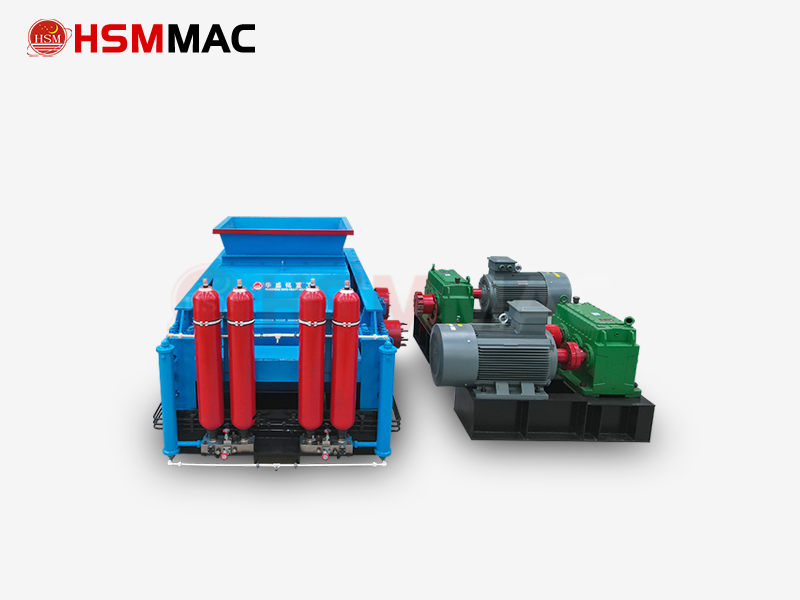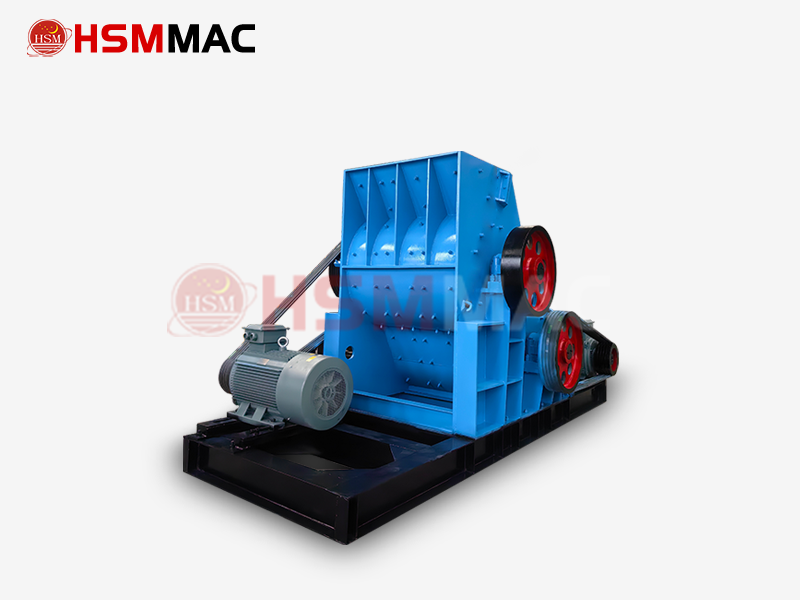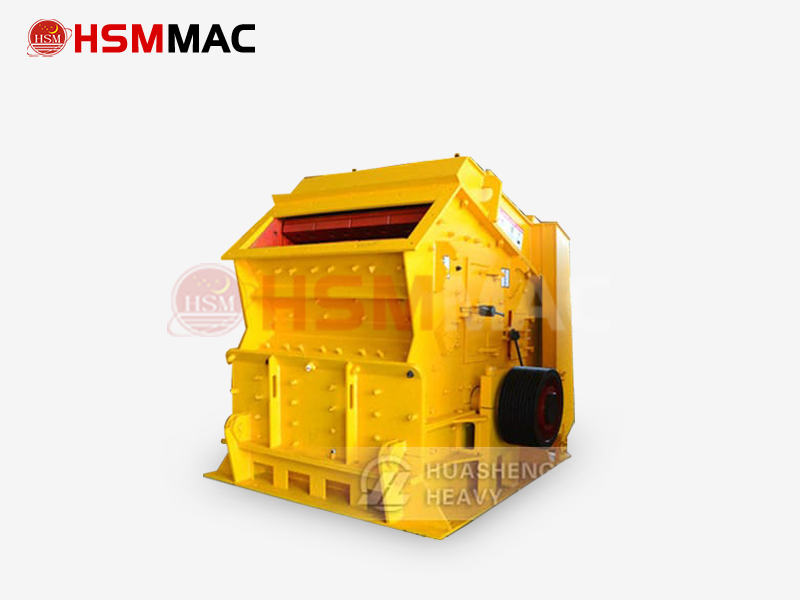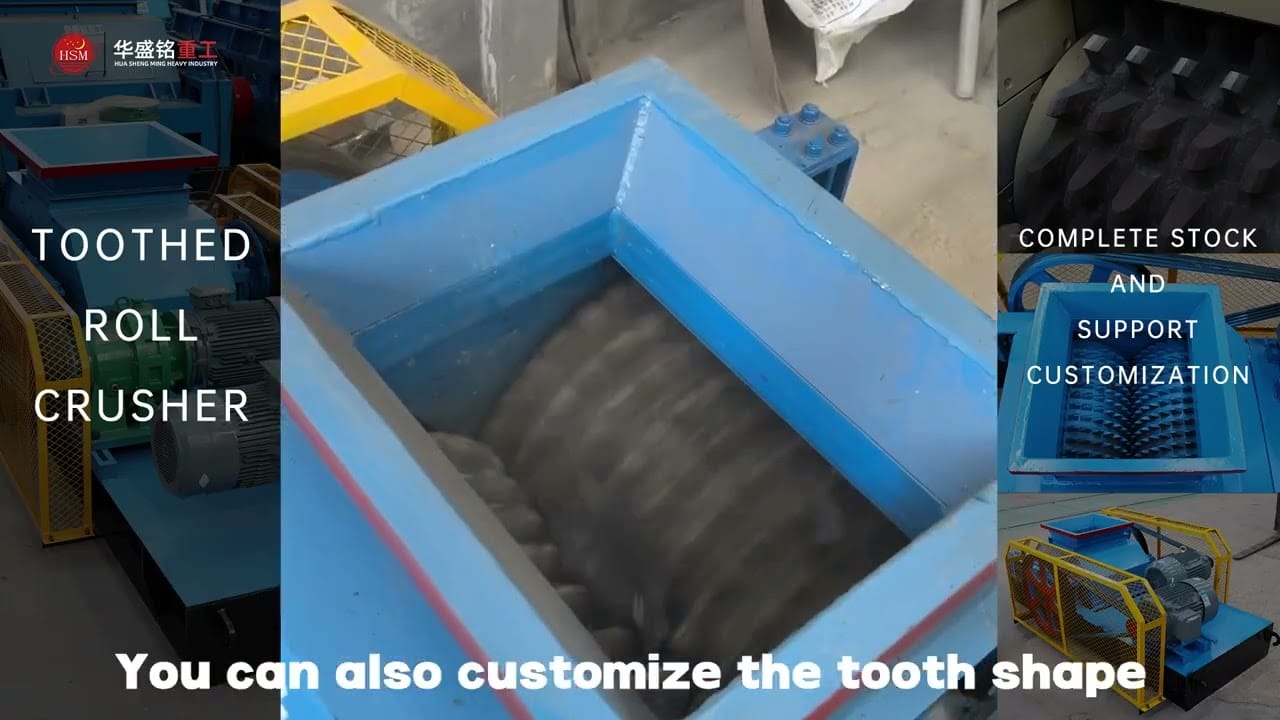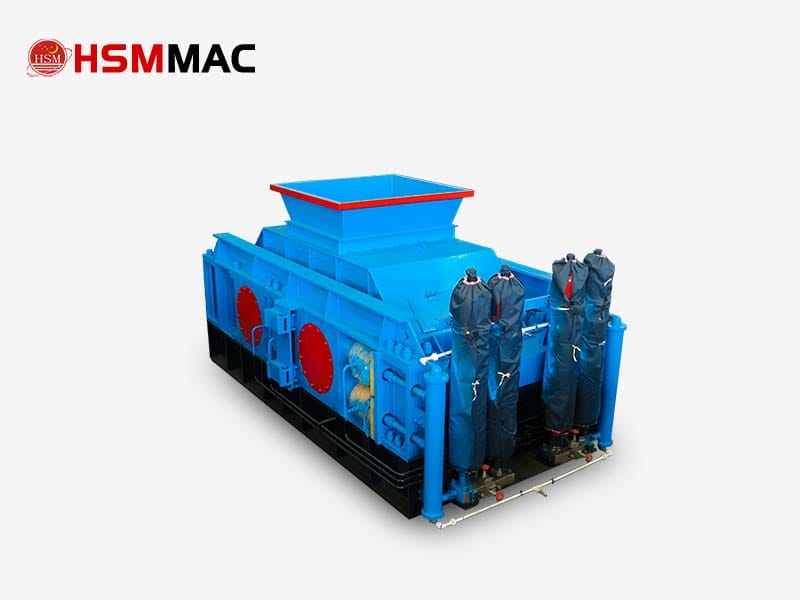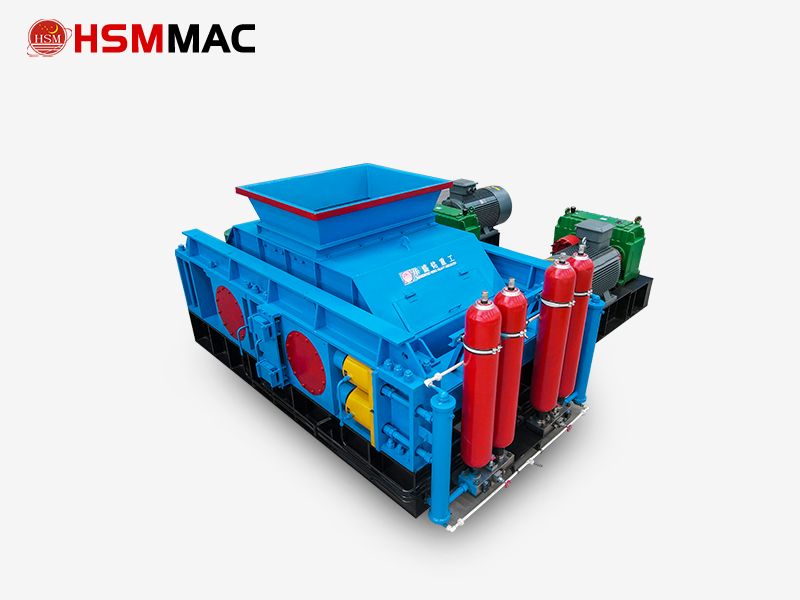The application of double roll crusher in the production of micro-fine concrete sand has significant advantages, the core of which lies in the particle size control through the flexible adjustment of roll spacing and the optimisation of crushing method. The following is a comprehensive analysis of its technical characteristics and practical effects:
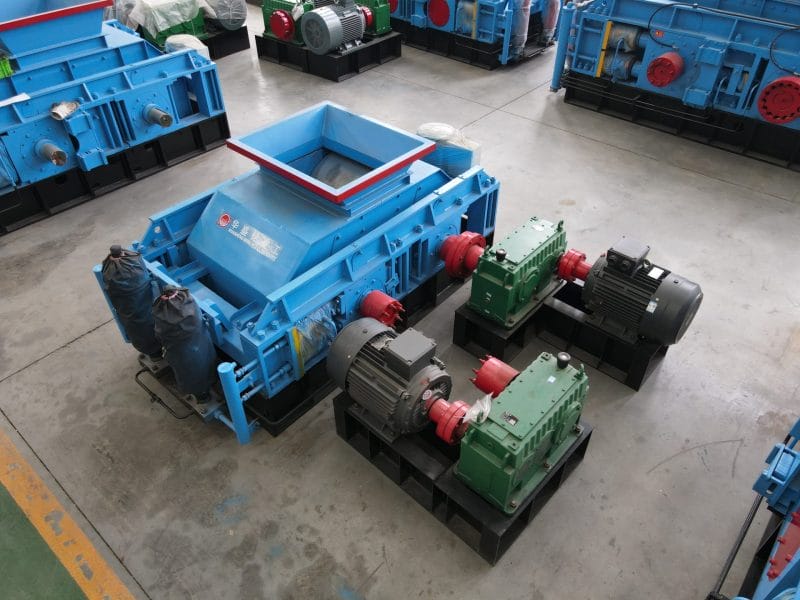
1. Particle size control and adjustment mechanism
Roll spacing adjustment
The core of the double roll crusher is to achieve particle size control by adjusting the distance between the two rolls. The smaller the distance between the rolls, the greater the squeezing pressure on the material, the higher the degree of crushing and the finer the particle size of the discharge. Modern equipment mostly adopts hydraulic or electric adjustment system, which can adjust the pitch to 0.5-5mm range in real time to meet the demand of micro-fine sand (such as 1mm or less) production. For example, by reducing the roll spacing to less than 1 mm, fine sand that meets the standard for concrete sand can be produced.
Optimisation of crushing method
Tooth design: Sharp teeth for hard materials (e.g. granite) enhance the crushing effect; gentle teeth reduce over-crushing and are suitable for soft materials (e.g. limestone). Speed adjustment: Reducing the speed can prolong the residence time of materials between rollers and increase the number of crushing times, thus refining the sand grains.
2. Advantages of producing micro-fine sand
Uniformity of particle size
The double roll crusher crushes the material through extrusion and shearing, producing sand with regular shape, continuous grading and low needle flake content, which is in line with the high requirements of concrete aggregate on grain shape.
Low chalking and environmental protection
The equipment has low pulverisation rate (powder content ≤5%) during the crushing process, which reduces the pressure of subsequent screening and dust removal. At the same time, the sealed structure design and noise reduction device can reduce dust and noise pollution, in line with green production standards.
High efficiency and energy saving
Compared with the vertical shaft impact crusher and other equipment, the energy consumption of the double roll crusher is reduced by more than 30%, and the finished product rate is close to 100% with no material waste. For example, when processing river pebbles, the unit power consumption is only 60% of similar equipment.
3.Applicable Scenarios and Limitations
Applicable materials
Mainly applicable to medium-hard and the following materials (such as limestone, basalt, construction waste, etc.), the feed size is usually ≤ 150 mm, and the finished sand can cover the micro-fine range of 0.5-5 mm.
Limitations
Hardness limitation: the crushing efficiency for high hardness materials (e.g. quartzite) is low, and the roll surface wears fast, requiring frequent replacement of wear-resistant layer. Sand quality grade: the finished sand usually meets the standard of Class Ⅱ sand. If Class Ⅰ sand is needed (e.g. high-strength concrete sand), it needs to be combined with the Vertical Shaft Impact Crusher to carry out secondary shaping.
4. Practical application suggestions
Parameter matching: Select the roll surface material (e.g. Mn18Cr2MoNi high wear-resistant alloy) according to the hardness of the raw material, and regularly maintain the hydraulic system to ensure the stability of the roll spacing. Process combination: In the production line, the front jaw crusher can be used for coarse crushing, followed by double-roll crusher to complete the fine crushing, forming a highly efficient sand production process.
In summary, with its precise particle size control, low energy consumption and high yield, the double roll crusher is the ideal equipment for producing micro-fine concrete sand, especially suitable for small and medium-sized sand and gravel projects that are sensitive to environmental protection and cost.










